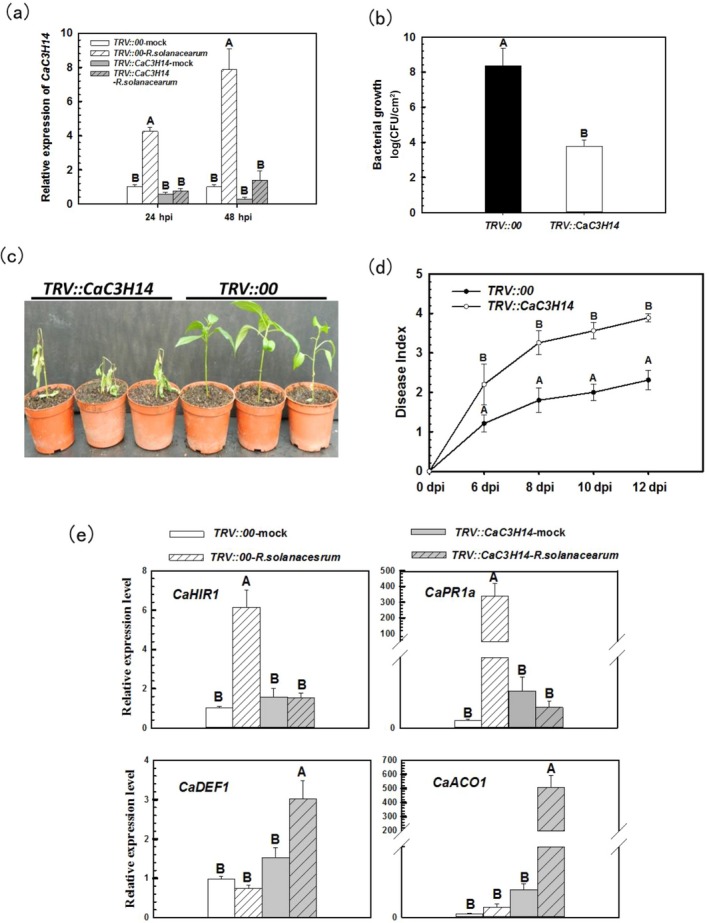Figure 3.

Virus‐induced gene silencing (VIGS) of CaC3H14 enhanced the susceptibility of pepper plants to Ralstonia solanacearum. (a) The silencing efficiency of CaC3H14 in TRV::CaC3H14 plants, with or without inoculation, detected by real‐time reverse transcription‐polymerase chain reaction (RT‐PCR) at 24 and 48 h post‐inoculation (hpi). The relative transcription level of CaC3H14 in TRV::CaC3H14 plants was compared with that in mock‐treated TRV::00 plants, which was set as unity. (b) Ralstonia solanacearum growth in inoculated CaC3H14‐silenced or control plants at 48 hpi. CFU, colony‐forming unit. (c) Disease symptoms of TRV::00 and TRV::CaC3H14 plants at 6 days post‐inoculation (dpi) by root irrigation. (d) Dynamic disease index of TRV::00 and TRV::CaC3H14 pepper plants from 6 to 12 dpi; data represent the mean ± standard deviation (SD) of three biological replicates each comprising five plants. (e) The effect of CaC3H14 silencing on the relative expression of defence‐related genes in inoculated plants at 24 hpi. The relative transcription of immunity‐associated marker genes in R. solanacearum‐inoculated TRV::00 and TRV::CaC3H14 and mock‐treated TRV::CaC3H14 plants was compared with that in mock‐treated TRV::00 plants, which was set as unity. In (a), (b), (d) and (e), data represent the mean ± SD of two independent experiments, each with three replicates (n = 6). Different letters indicate significant difference as determined by Student–Newman–Keuls test (P < 0.01).
